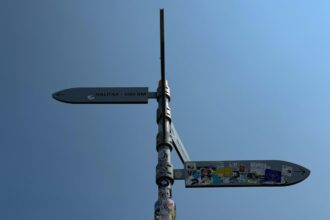The emergence of KGB deep cover illegals marked a significant evolution in the realm of espionage during the Cold War. As tensions escalated between the United States and the Soviet Union, the need for covert operatives who could blend seamlessly into Western society became paramount. These agents, often referred to as “illegals,” were trained to adopt false identities and live among their targets without raising suspicion.
This strategic shift was a response to the increasing effectiveness of counterintelligence measures employed by Western nations, which made traditional espionage methods less viable. The KGB recognized that to gather intelligence effectively, they needed operatives who could operate independently and establish long-term connections within their host countries. This led to the recruitment of individuals who could assimilate into American life, adopting local customs, language, and even familial ties.
The rise of these deep cover agents represented a new frontier in espionage, where the lines between friend and foe became increasingly blurred. Their ability to gather sensitive information while maintaining a façade of normalcy allowed the KGB to penetrate the very heart of Western society.
Key Takeaways
- KGB deep cover illegals played a significant role in Cold War espionage, using their covert identities to gather intelligence and carry out operations.
- The training and selection process for KGB deep cover illegals was rigorous, involving extensive preparation in language, culture, and espionage techniques.
- Famous KGB deep cover illegals, such as the “illegals” network uncovered in the United States in 2010, conducted high-profile operations that had a major impact on Cold War politics.
- KGB deep cover illegals faced numerous dangers and risks, including the constant threat of exposure, arrest, and even assassination.
- The legacy of KGB deep cover illegals continues to influence modern espionage, with their methods and techniques still relevant in today’s world of espionage.
Training and Selection Process for KGB Deep Cover Illegals
The selection process for KGB deep cover illegals was rigorous and multifaceted, designed to identify individuals with the right combination of skills, adaptability, and psychological resilience. Candidates were often drawn from various backgrounds, including military personnel, academics, and even ordinary citizens with exceptional capabilities. The KGB sought individuals who could not only master the art of deception but also navigate the complexities of life in a foreign country.
Once selected, candidates underwent extensive training that encompassed a wide range of disciplines.
This training often involved immersive experiences where operatives practiced living as their assumed personas in simulated environments. The KGB emphasized psychological conditioning, ensuring that agents could withstand the pressures of living undercover while remaining committed to their mission. This comprehensive approach to training produced operatives who were not only skilled spies but also adept at blending into their surroundings.
The Role of KGB Deep Cover Illegals in Cold War Espionage
KGB deep cover illegals played a pivotal role in the broader context of Cold War espionage, serving as the eyes and ears of the Soviet Union within enemy territory. Their primary objective was to gather intelligence on military operations, technological advancements, and political developments in the West. By embedding themselves within American society, these agents could access information that was otherwise unattainable through conventional means.
Their operations often involved establishing connections with influential figures, infiltrating organizations, and even engaging in industrial espionage. The effectiveness of these deep cover agents was evident in several high-profile cases during the Cold War. They were instrumental in acquiring sensitive information about nuclear programs, military strategies, and diplomatic negotiations.
The intelligence gathered by these operatives not only informed Soviet policy but also shaped the broader geopolitical landscape. As tensions between the superpowers escalated, the activities of KGB deep cover illegals became increasingly critical to the Soviet Union’s efforts to maintain parity with the United States.
Famous KGB Deep Cover Illegals and Their Operations
| Illegals | Codenames | Operations |
|---|---|---|
| Richard Murphy | Vladimir Guryev | Illegally residing in the United States and gathering information |
| Cynthia Murphy | Lidiya Guryeva | Operating as a real estate agent and gathering intelligence |
| Anna Chapman | Unnamed | Using her public relations job to gather information and pass it to the Russian government |
| Mikhail Semenko | Unknown | Engaging in espionage activities in the United States |
| Vicky Pelaez | Unknown | Acting as a journalist while gathering information for the Russian government |
Among the many KGB deep cover illegals who operated during the Cold War, a few stand out for their audacious missions and significant impact on espionage history. One notable figure is Anna Chapman, who gained notoriety in 2010 when she was arrested in the United States as part of a spy ring. Chapman exemplified the modern incarnation of a deep cover illegal, using her charm and social skills to integrate into American society while gathering intelligence for Russia.
Her case highlighted both the enduring relevance of deep cover operations and the challenges faced by counterintelligence agencies. Another prominent example is the “Illegals Program,” which involved a network of Russian spies living undercover in various U.S. cities.
This operation showcased the KGB’s commitment to employing deep cover tactics in a post-Cold War context. The agents involved were tasked with gathering information on political trends and public opinion while maintaining their fabricated identities. The exposure of this network not only underscored the ongoing espionage activities between Russia and the United States but also revealed the lengths to which both nations would go to protect their interests.
The Dangers and Risks Faced by KGB Deep Cover Illegals
The life of a KGB deep cover illegal was fraught with peril, as these operatives faced numerous dangers that could jeopardize their missions and lives. The constant threat of exposure loomed large over their operations; if discovered, they risked arrest, imprisonment, or even worse consequences. The psychological toll of living under an assumed identity also weighed heavily on many agents, as they struggled to maintain their cover while grappling with feelings of isolation and paranoia.
Moreover, deep cover illegals often had to navigate complex social dynamics within their host countries. Building relationships with locals while remaining vigilant about revealing their true identities required immense skill and emotional intelligence. Any misstep could lead to suspicion or betrayal, putting not only their missions at risk but also their personal safety.
The dangers inherent in this line of work were compounded by the ever-evolving landscape of international relations, where shifting alliances and geopolitical tensions could suddenly change the rules of engagement.
The Legacy of KGB Deep Cover Illegals in Modern Espionage

The legacy of KGB deep cover illegals continues to resonate in contemporary espionage practices around the world. Their innovative methods and strategies have influenced how intelligence agencies approach covert operations today. The emphasis on long-term infiltration and relationship-building remains relevant as modern spies adapt to an increasingly interconnected global landscape.
The lessons learned from the successes and failures of these deep cover agents have shaped training programs for new generations of operatives. In addition to influencing operational tactics, the legacy of KGB deep cover illegals has also permeated popular culture and public perception of espionage. Films, television shows, and literature often draw inspiration from their stories, portraying them as enigmatic figures navigating a world filled with intrigue and danger.
This fascination with deep cover operations reflects society’s enduring curiosity about the hidden machinations of intelligence work and its implications for national security.
The Impact of KGB Deep Cover Illegals on Cold War Politics
The activities of KGB deep cover illegals had a profound impact on Cold War politics, shaping not only intelligence-gathering efforts but also diplomatic relations between superpowers. By providing critical information about Western military capabilities and political strategies, these agents influenced Soviet decision-making at the highest levels. Their intelligence reports often informed key policy decisions, contributing to the broader narrative of competition between East and West.
Moreover, the exposure of KGB operations occasionally sparked diplomatic crises that further strained relations between nations. When deep cover agents were uncovered, it often led to public scandals that heightened tensions and fueled anti-Soviet sentiment in Western countries. These incidents served as reminders of the pervasive nature of espionage during the Cold War era and underscored the lengths to which both sides would go to protect their interests.
The Methods and Techniques Used by KGB Deep Cover Illegals
KGB deep cover illegals employed a variety of methods and techniques to carry out their missions successfully. One key strategy was the use of false identities, which involved creating comprehensive backstories that included fabricated personal histories, documentation, and even family ties. This meticulous attention to detail allowed agents to navigate social situations without arousing suspicion while establishing credibility within their communities.
In addition to identity creation, these operatives utilized advanced surveillance techniques to gather intelligence discreetly. They often employed technology such as hidden cameras or listening devices to monitor conversations and activities without detection. Furthermore, they developed skills in social engineering—manipulating individuals into divulging sensitive information—allowing them to extract valuable insights from unsuspecting sources.
These methods combined to create a formidable toolkit for KGB deep cover illegals as they operated within hostile environments.
The Uncovering and Exposure of KGB Deep Cover Illegals
Despite their extensive training and preparation, many KGB deep cover illegals ultimately faced exposure due to various factors ranging from human error to advances in counterintelligence technology. The uncovering of these agents often led to dramatic confrontations that captured public attention and sparked international intrigue. In some cases, defector testimonies or investigative journalism played crucial roles in revealing their identities and operations.
The exposure of KGB deep cover illegals had far-reaching consequences for both the agents themselves and the broader geopolitical landscape. Arrests often resulted in diplomatic tensions between nations as governments grappled with the implications of espionage activities on their soil. Additionally, these incidents prompted increased scrutiny on intelligence agencies’ practices and led to reforms aimed at enhancing counterintelligence measures.
The Influence of KGB Deep Cover Illegals on Spy Fiction and Pop Culture
The enigmatic world of KGB deep cover illegals has left an indelible mark on spy fiction and popular culture throughout history. Their stories have inspired countless novels, films, and television series that explore themes of deception, loyalty, and moral ambiguity within espionage narratives. Characters modeled after these operatives often embody complex personalities grappling with dual identities while navigating treacherous political landscapes.
This fascination with deep cover operations reflects society’s enduring intrigue with espionage as both an art form and a reflection of real-world tensions between nations. Works such as John le Carré’s novels or films like “Tinker Tailor Soldier Spy” delve into the psychological complexities faced by spies operating under false pretenses—echoing the experiences of KGB deep cover illegals during their missions.
The Continued Relevance of KGB Deep Cover Illegals in Today’s World of Espionage
In an era characterized by rapid technological advancements and shifting geopolitical dynamics, the relevance of KGB deep cover illegals remains evident within contemporary espionage practices. Intelligence agencies worldwide continue to employ similar tactics—utilizing operatives who can blend into foreign societies while gathering critical information on national security threats or political developments. Moreover, as globalization fosters increased interconnectedness among nations, the challenges faced by modern spies mirror those encountered by their Cold War predecessors.
The need for adaptability, cultural fluency, and psychological resilience remains paramount as operatives navigate complex social landscapes fraught with potential risks. As such, the legacy of KGB deep cover illegals endures—not only shaping historical narratives but also informing current approaches to intelligence gathering in an ever-evolving world.
In the shadowy world of espionage, the KGB’s deep cover illegals program stands out as a particularly intriguing chapter. These operatives, often living for years under false identities, were tasked with infiltrating foreign societies to gather intelligence. A related article that delves into the intricacies of such covert operations can be found on the War Room website. This piece provides a comprehensive look at the strategies and challenges faced by these undercover agents. For more insights, you can read the full article by visiting this link.
WATCH THIS 🤯How the KGB Stole America’s Future
FAQs
What were KGB deep cover illegals?
KGB deep cover illegals were Soviet spies who operated under deep cover in foreign countries, often for many years, with the goal of gathering intelligence and carrying out espionage activities on behalf of the Soviet Union.
How did KGB deep cover illegals operate?
KGB deep cover illegals operated by assuming false identities and integrating themselves into the societies of the countries they were targeting. They often posed as ordinary citizens, establishing careers, families, and social connections to avoid suspicion.
What were the goals of KGB deep cover illegals?
The goals of KGB deep cover illegals included gathering intelligence on political, military, and economic matters, recruiting and running agents, and carrying out covert operations to advance the interests of the Soviet Union.
How were KGB deep cover illegals trained and selected?
KGB deep cover illegals underwent extensive training in espionage, counter-surveillance, language skills, and the use of false identities. They were carefully selected for their ability to blend in and operate covertly in foreign countries.
What were some notable cases of KGB deep cover illegals?
Notable cases of KGB deep cover illegals include the “Illegals Program” in the United States, which was uncovered by the FBI in 2010, and the “Cambridge Five” spy ring in the United Kingdom, which included KGB deep cover illegals who infiltrated British intelligence agencies.




